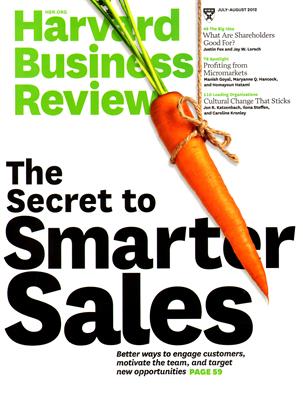hbr blog
-
Why Do You Think That Harvard Business Review Does This When it Comes to Sales?
- November 18, 2016
- Posted by: Dave Kurlan
- Category: Understanding the Sales Force

The most recent example of Harvard Business Review and sales stupidity came earlier this month when they ran an article on social selling being the solution to prevent salespeople from becoming obsolete. I wrote this article on LinkedIn bring it to light and differentiate fact from fiction.
-
More Junk Sales Science in HBR Blog
- April 14, 2015
- Posted by: Dave Kurlan
- Category: Understanding the Sales Force

What do donuts, chips, cake and ice cream have in common with some of the articles that are written and published about salespeople, sales selection and assessments? That’s right, they are all junk and junk is bad for you to consume. Over the years, there has been no better source of junk science written about sales and salespeople than the reputable Harvard Business Review Blog. Recently, they put out another absurdly awful piece, this one written by sales consultant, Steve Martin. As most of these articles do, “What Separates the Strongest Salespeople from the Weakest” attempts to use personality and conditions to differentiate the two groups. This comes on the heels of another horrible article I called out in March 2015, which led to this amazing epic debate on the science of sales, sales assessments, and sales selection. This is why this latest HBR article is yet another example of junk science.
-
Another HBR Article on Sales Leaves Me with Mixed Feelings
- July 20, 2012
- Posted by: Dave Kurlan
- Category: Understanding the Sales Force
I was asked to comment on an article called The End of Solution Selling, which appeared in Harvard Business Review. The article was generally right on, but it also included several things that irritated me enough to question them and the article.

